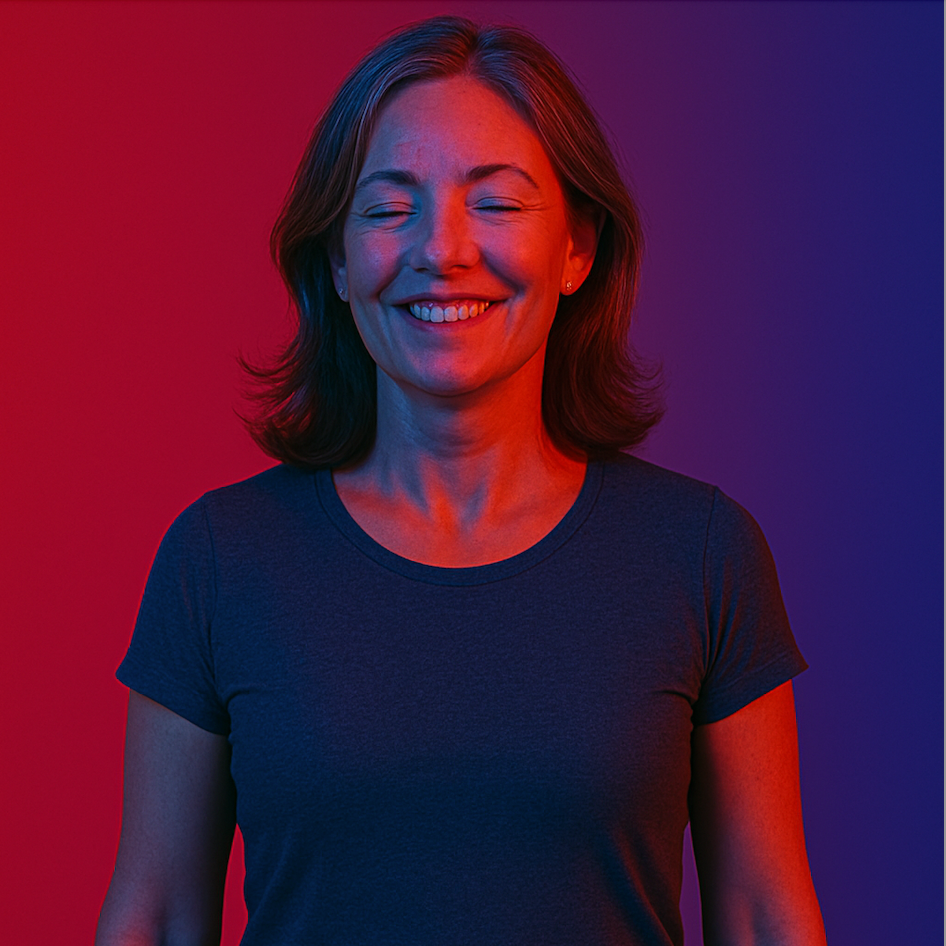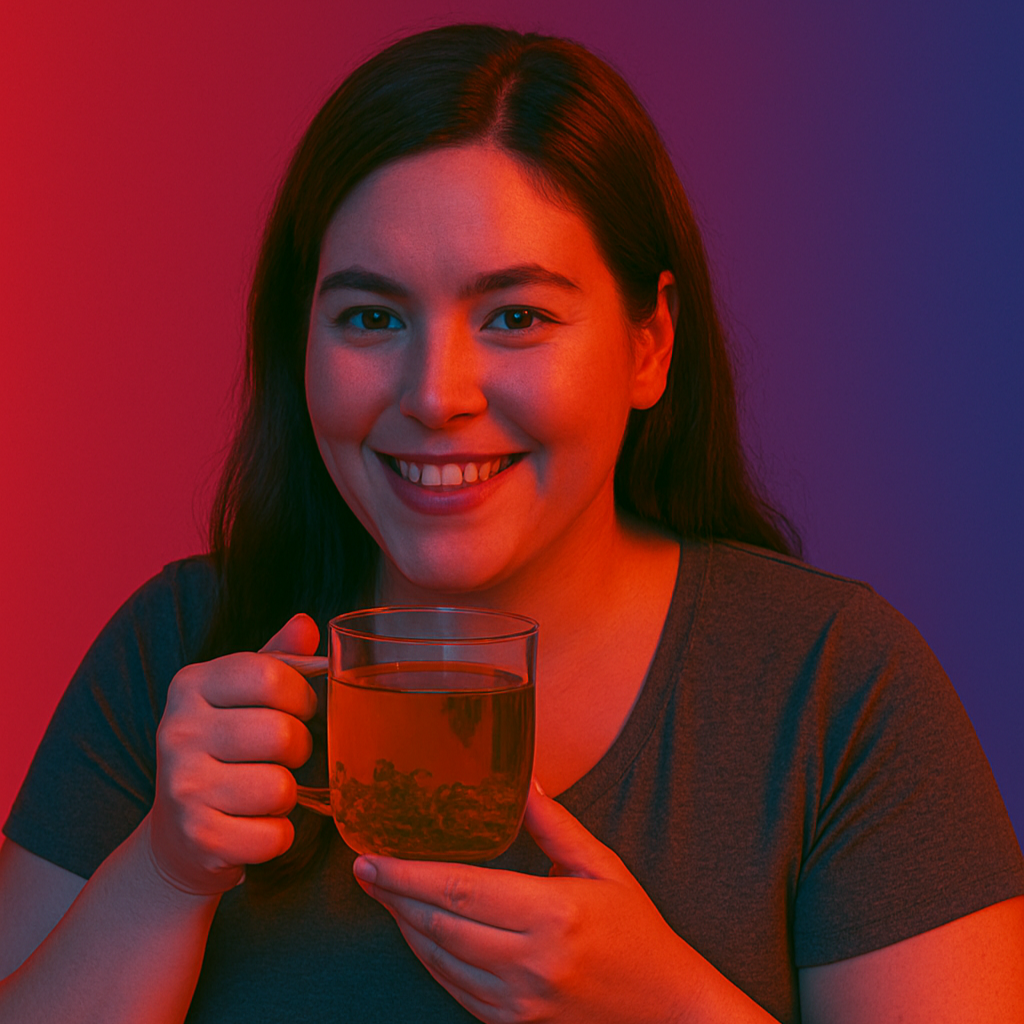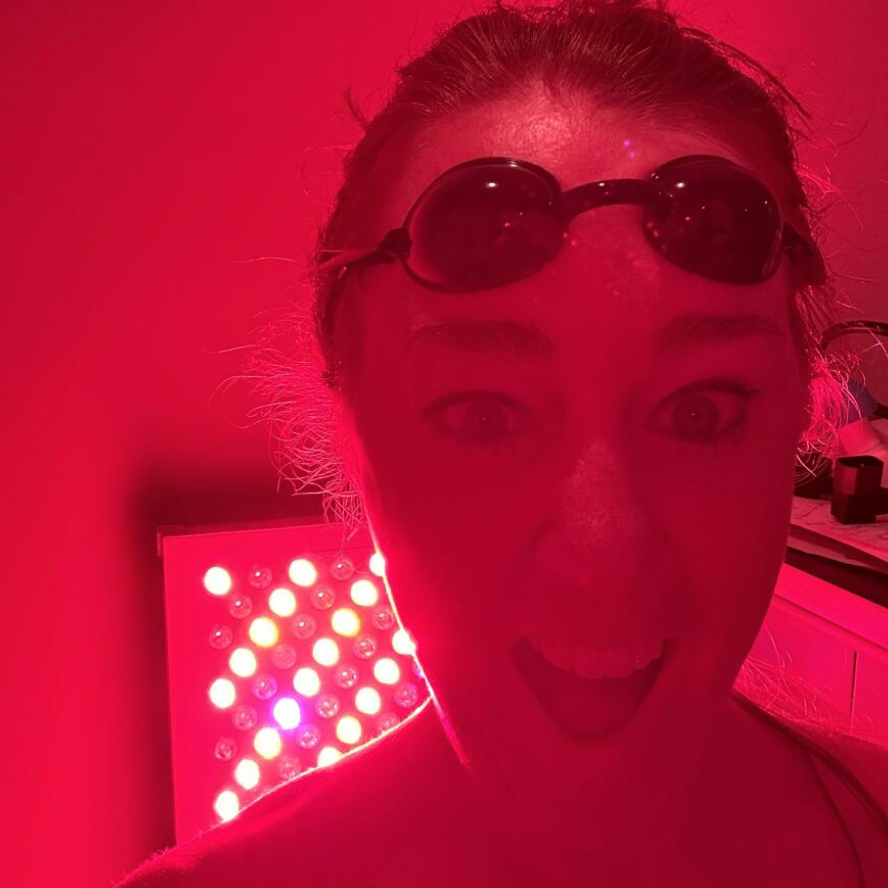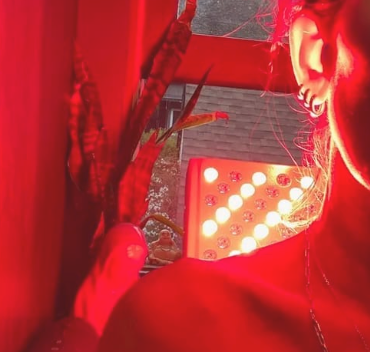
★★★★★ Rated 4.9/5
Embrace Your Best Self: Red Light Therapy for Female Wellness...
Hormonal imbalances, skin concerns, and fatigue can all take a toll on your health as you age. Red light therapy (RLT) offers a natural, non-invasive solution to support your body through these changes, improving everything from skin tone to energy levels.
Why Solis is recommended by Wellness Professionals:
☑️ Supports hormonal balance
☑️ Reduces fatigue related to hormonal fluctuations, restoring vitality
☑️ Helps ease common symptoms of perimenopause and menopause
Accelerate Your TransformationHow Solis Red Light Therapy Transforms Hormonal Imbalance

Red light therapy targets the deeper layers of your skin, reaching up to 6–10mm beneath the surface. The Solis panels emit specific wavelengths (630nm, 660nm, and 850nm) that stimulate the body's natural healing processes. For female health, this light interacts with the mitochondria of your cells, helping to regulate hormonal activity and support the body’s natural balance, particularly during perimenopause and menopause when hormonal fluctuations occur.

When red light reaches the cells, it enhances mitochondrial function, which is responsible for producing energy. This stimulation increases the production of ATP (adenosine triphosphate), the body’s primary energy source. By improving cellular energy production, red light therapy helps reduce the fatigue that often accompanies hormonal imbalances, offering a natural, non-invasive way to restore vitality and combat tiredness.

The wavelengths in red light therapy increase blood flow, which is crucial for improving circulation and oxygen delivery to tissues. For women experiencing perimenopause or menopause, this enhanced circulation helps reduce the inflammation that contributes to discomfort, mood swings, and low energy. The therapy also supports better nutrient and oxygen distribution to cells, helping to rejuvenate the body and promote overall health.

The benefits of red light therapy are cumulative, meaning consistent use leads to long-lasting results. While you may notice an immediate improvement in energy levels and a reduction in fatigue, the most significant changes in hormonal balance and overall wellbeing take place over time. Regular use over 3–6 months helps your body manage hormonal fluctuations more effectively, supporting long-term health and vitality.
Red light therapy targets the deeper layers of your skin, reaching up to 6–10mm beneath the surface. The Solis panels emit specific wavelengths (630nm, 660nm, and 850nm) that stimulate the body's natural healing processes. For female health, this light interacts with the mitochondria of your cells, helping to regulate hormonal activity and support the body’s natural balance, particularly during perimenopause and menopause when hormonal fluctuations occur.
When red light reaches the cells, it enhances mitochondrial function, which is responsible for producing energy. This stimulation increases the production of ATP (adenosine triphosphate), the body’s primary energy source. By improving cellular energy production, red light therapy helps reduce the fatigue that often accompanies hormonal imbalances, offering a natural, non-invasive way to restore vitality and combat tiredness.
The wavelengths in red light therapy increase blood flow, which is crucial for improving circulation and oxygen delivery to tissues. For women experiencing perimenopause or menopause, this enhanced circulation helps reduce the inflammation that contributes to discomfort, mood swings, and low energy. The therapy also supports better nutrient and oxygen distribution to cells, helping to rejuvenate the body and promote overall health.
The benefits of red light therapy are cumulative, meaning consistent use leads to long-lasting results. While you may notice an immediate improvement in energy levels and a reduction in fatigue, the most significant changes in hormonal balance and overall wellbeing take place over time. Regular use over 3–6 months helps your body manage hormonal fluctuations more effectively, supporting long-term health and vitality.




What else does the science say?
Emerging research on red light therapy shows promising applications for women's health beyond what we've highlighted. Clinical studies have documented improvements in hormonal balance, reduced symptoms during perimenopause and menopause, and support for reproductive health. The specific wavelengths in our panels promote cellular energy production in tissues that are particularly responsive to metabolic support, including ovarian and thyroid cells. This growing body of evidence explains why more women's health specialists are recommending red light therapy as a natural supplement to conventional care protocols.
In a controlled trial, women using a near-infrared (NIR) light therapy belt during menstruation experienced significantly less menstrual pain and shorter pain duration compared to those using hot packs. The NIR group also required fewer pain medications, showing that red-spectrum light (∼830–850 nm, as used in Solis devices) can offer effective, drug-free relief from monthly cramping.
(PMID: 28686000)
A randomised trial found that 12 weeks of low-level laser therapy at 830 nm (applied to acupuncture points) led to measurable hormonal improvements in women with PCOS. The laser group showed significant reductions in insulin resistance and elevated androgen levels, while the control group showed no such changes. These findings suggest red light helped rebalance hormone levels and support ovulatory function in women with PCOS.
(PMID: 30026896)
In a groundbreaking study by Ohshiro (2013), 74 women with long-term infertility (average 9 years of failed IVF) received 830 nm photobiomodulation therapy. 21.7% of women became pregnant, and over two-thirds of those pregnancies led to live births. An expanded follow-up trial in 701 women confirmed similar results. These outcomes highlight the remarkable ability of Solis’s therapeutic wavelengths to reactivate reproductive function when other options had failed.
(PMID: 24610987)
A 2024 randomised trial tested 850 nm laser therapy prior to embryo transfer in women with a history of IVF failure. Those receiving the laser treatment achieved a 33.3% pregnancy rate, compared to 20.0% in controls. While the sample size was small, the clear upward trend suggests that near-infrared light, like that used in Solis panels, may improve implantation and IVF outcomes in women with difficult fertility histories.
(PMID: 39051002)
A clinical study on autoimmune thyroid disease (Hashimoto’s) found that 830 nm laser therapy helped restore thyroid function in patients with hypothyroidism. After 10 sessions, 47% of participants no longer needed any medication for at least 9 months. The remainder required lower doses, and autoimmune antibody levels (TPOAb) fell by ~40%. No such improvement was observed in the control group. This shows that Solis’s NIR wavelengths may help rebalance thyroid hormones and reduce autoimmune activity.
(PMID: 20662037)
A 2019 review found that intravaginal LED light therapy using 660 nm and 850 nm wavelengths helped improve symptoms of vaginal dryness, thinning, and urinary incontinence in menopausal women. Participants experienced increased lubrication, thicker tissue, and better tone—comparable to hormone therapy but without medication. These regenerative effects were sustained over time and align directly with the therapeutic wavelengths found in Solis devices.
(PMID: 36743139)
Testimonials

Emma E.
Regaining My Energy and Mood During Perimenopause.
I started using Solis red light therapy about two months ago after reading about its benefits for hormone balance. I was struggling with perimenopausal symptoms—mainly intense fatigue and irritability. After about 6 weeks of using the panel daily, I noticed a huge improvement. My energy levels are higher, and I’m much less irritable. My mood has been more stable, and I'm sleeping better. I’m really glad I gave this a try, as I was starting to feel like my body was changing in ways I couldn’t control. I feel more like myself again.

Freya C.
Hormonal Acne and Skin Changes.
After having my second baby, I noticed my hormones were completely out of sync. I was feeling emotional, tired all the time, and my skin was breaking out more than ever. A friend suggested I try red light therapy to balance things out, and I’m so glad I did. It’s been about two months now, and I feel like I’ve turned a corner. My skin is clearer, and my energy has been through the roof. I also feel much more emotionally stable, which is a relief! Red light therapy has really helped me reclaim my confidence and energy.

Rachael H.
Hormonal Imbalance and Fatigue.
After a few months of feeling drained and unable to keep up with my usual routine, I realised my hormones were out of whack. I found red light therapy while researching ways to support my body naturally. After a few weeks of using the panel every night, I felt a significant boost in my energy. I’m no longer dragging myself through the day, and I’ve noticed that I don’t feel as tired after work. I’ve also been sleeping better, and my mood has stabilised. I feel more like my old self!
Female Health FAQs
How can red light therapy support female hormone balance?
Red and near-infrared light therapy works by stimulating mitochondrial activity, reducing inflammation, and improving circulation in hormone-regulating tissues. Clinical studies show it can help regulate insulin, reduce androgen levels in PCOS, and even support thyroid and ovarian function.
Think of Solis as a natural reset button for the systems that drive hormonal balance.
Does red light therapy help with menopause or perimenopause symptoms?
Yes. Research shows red/NIR light can improve sleep, mood, pelvic comfort, and even vaginal tissue health—common concerns during the menopausal transition. Some users also report fewer hot flushes and more stable energy.
Solis helps ease the shift by gently supporting the body where it needs it most.
Can red light therapy help with PCOS?
Studies have shown that near-infrared light therapy (especially around 830 nm) can reduce insulin resistance and excess androgens—two key drivers of PCOS. Some trials also report improved ovulation and fertility outcomes.
Solis panels offer drug-free support for one of the most common female hormone imbalances.
Is red light therapy safe for weight loss?
Yes, red light therapy is completely safe when used as directed. It’s a non-invasive treatment with minimal side effects. Red light therapy works by penetrating the skin with safe wavelengths of light that stimulate your cells, promote circulation, and support healthy metabolic function. It’s an effective, drug-free way to support your weight loss and body sculpting goals without the need for harsh treatments or invasive procedures.
Red light therapy is a safe, natural way to support fat loss and improve body contouring.
Can red light therapy help with skin issues during weight loss?
Yes, red light therapy is great for maintaining healthy skin during weight loss. As you shed fat, your skin may need a little extra care to keep it looking smooth and firm. Red light therapy boosts collagen production, which helps to tighten and tone the skin, reducing the appearance of loose or sagging skin. It can also improve skin texture and elasticity, making it an excellent companion to your weight loss journey for both body contouring and skin health.
Red light therapy supports healthy skin, improving texture and elasticity as you lose weight.
Is red light therapy safe to use around the reproductive system?
Yes. Red and near-infrared light is non-invasive and safe for use over the lower abdomen, ovaries, or even transvaginally (when guided by a medical device). The wavelengths used in Solis panels have been studied for fertility, menstrual health, and pelvic pain with excellent safety outcomes.
It’s a gentle therapy designed to support, not interfere.
Will it help with period pain or PMS symptoms?
Yes. Clinical trials have shown red/NIR light reduces menstrual cramps, lowers inflammation, and may ease PMS-related discomfort like mood swings or bloating.
Use Solis like a calming ritual that helps your body move through each cycle more smoothly.
How often should I use red light therapy for hormone support?
For general hormonal balance or symptom relief, aim for 6–7 sessions per week, 10–20 minutes per session. Some users target specific times of their cycle (e.g. premenstrual phase), while others use it consistently throughout the month.
Solis works best when it becomes a part of your rhythm—just like the hormones it helps support.
Female Hormonal Health Usage Guide
Optimal Positioning
Position your Solis panel 6–12 inches from the body, focusing on areas linked to hormonal regulation—such as the lower abdomen (ovaries, womb area), lower back (adrenals and reproductive nerves), or thyroid (base of the neck) depending on your needs. For menstrual pain or endometriosis support, position over the lower abdomen or lower back. For hormonal balance and mood, sessions over the sternum or abdominal area can support systemic effects. Keep the panel perpendicular to the treatment area for even light distribution and maximum absorption.
Dosage Protocol
Start with 10–15 minute sessions, 5–7 times per week, using both Red (630nm/660nm) and Near-Infrared (810nm/830nm/850nm) modes together for layered benefits. Red light supports surface-level circulation and inflammation relief, while NIR penetrates deeper to stimulate ovaries, adrenals, thyroid, and cellular energy production. For menstrual discomfort, use during your luteal phase or as symptoms begin. For PCOS, thyroid support, or menopause, maintain consistent sessions throughout your cycle for cumulative hormonal support.
Habit Stacking
Hormone-Balancing Morning Ritual – Pair your Solis session with a calming breathwork or journaling practice to reduce cortisol and ground your nervous system first thing in the morning.
Evening Unwind Stack – Use Solis while lying down with a magnesium drink, herbal tea, or during meditation to promote hormonal balance and support deep sleep.
Cycle Syncing Support – In your luteal phase or menstruation week, stack your session with a warm compress or castor oil pack for gentle pelvic support and cramp relief.
Position your Solis panel 6–12 inches from the body, focusing on areas linked to hormonal regulation—such as the lower abdomen (ovaries, womb area), lower back (adrenals and reproductive nerves), or thyroid (base of the neck) depending on your needs. For menstrual pain or endometriosis support, position over the lower abdomen or lower back. For hormonal balance and mood, sessions over the sternum or abdominal area can support systemic effects. Keep the panel perpendicular to the treatment area for even light distribution and maximum absorption.
Start with 10–15 minute sessions, 5–7 times per week, using both Red (630nm/660nm) and Near-Infrared (810nm/830nm/850nm) modes together for layered benefits. Red light supports surface-level circulation and inflammation relief, while NIR penetrates deeper to stimulate ovaries, adrenals, thyroid, and cellular energy production. For menstrual discomfort, use during your luteal phase or as symptoms begin. For PCOS, thyroid support, or menopause, maintain consistent sessions throughout your cycle for cumulative hormonal support.
Hormone-Balancing Morning Ritual – Pair your Solis session with a calming breathwork or journaling practice to reduce cortisol and ground your nervous system first thing in the morning.
Evening Unwind Stack – Use Solis while lying down with a magnesium drink, herbal tea, or during meditation to promote hormonal balance and support deep sleep.
Cycle Syncing Support – In your luteal phase or menstruation week, stack your session with a warm compress or castor oil pack for gentle pelvic support and cramp relief.









